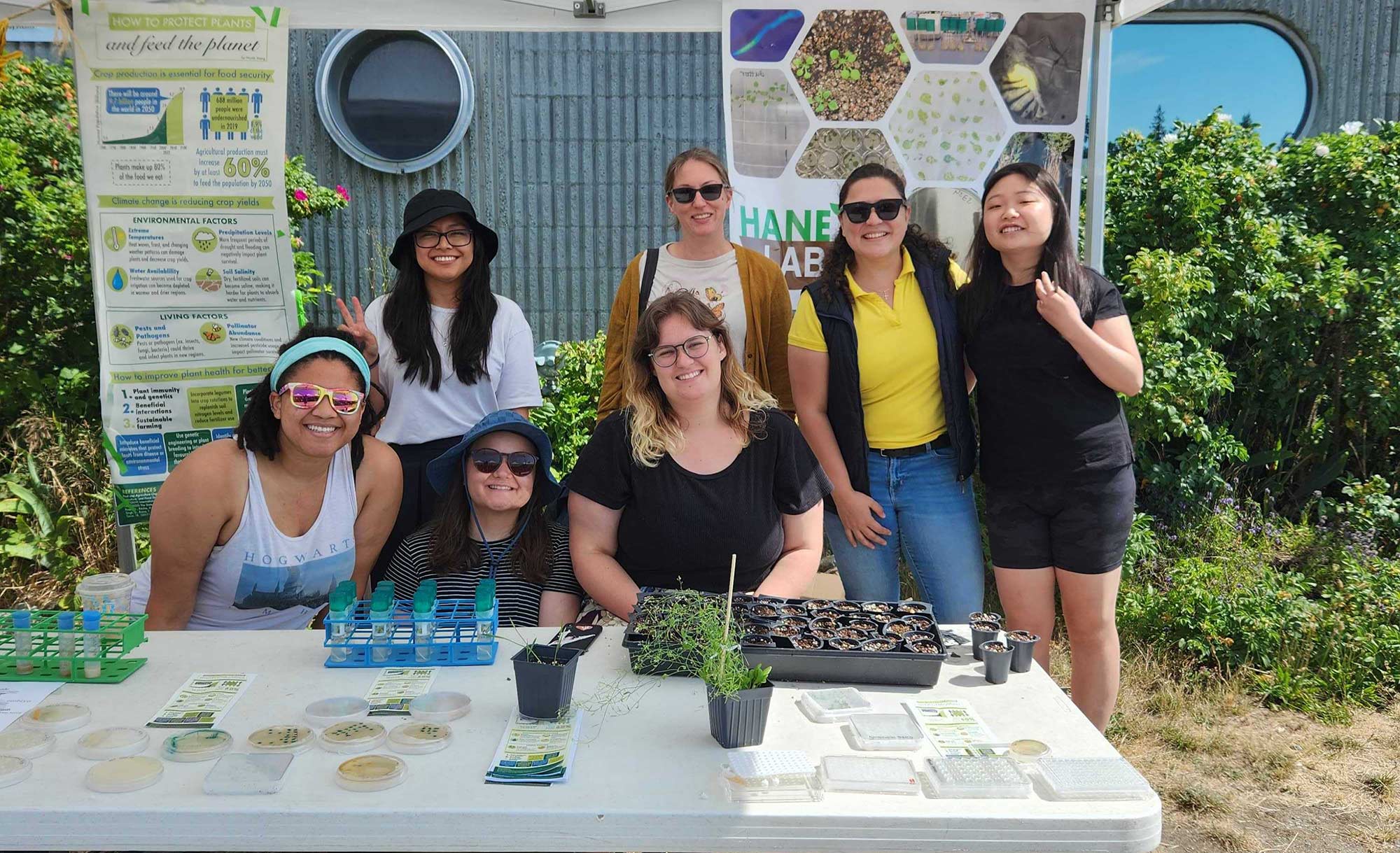
Identification and Characterization of Beneficial Plant Root-Associated Microbes
Project Lead
Zayda Morales Moreira, Department of Microbiology and Immunology
Funding
Center for Sustainable Food Systems at UBC Farm; Natural Sciences and Engineering Research Council; UBC Faculty of Land and Food Systems
About the Project
This project studies how beneficial bacteria can improve crop yields, disease resistance, and help crops adapt to climate change. Just like the microbes in our gut that help us digest our food, plants use microbes to get the most from the soil they grow in. Their plot at the UBC Farm looks at a model mustard plant, Arabidopsis (a small weedy plant with tiny white flowers), that grows well in disturbed soils.
The goal of this work is to understand the genetic basis of plant-microbiome interactions. At this stage, the work is basic research working primarily with a wild plant (Arabidopsis). However, the lab also tests all of their findings on crops. The long-term goal is to apply these findings to develop better biopesticides and biofertilizers.
External Links and Publications
Morales Moreira, Z., Chen, M.Y., Yanez Ortuno, D. and Haney, C.H.* (2022). Engineering plant microbiomes by integrating eco-evolutionary principles into current manipulation strategies. Current Opinion in Plant Biology.doi.org/10.1016/j.pbi.2022.102316
Geissmann, Q., Abram, P. K., Wu., D., Haney, C. H., Carrillo, J. Sticky Pi, a high-frequency smart trap to study insect circadian activity under natural conditions. (2022). Plos Biology. doi.org/10.1371/journal.pbio.3001689
Wang, N. R., Wiesmann, C. L., Melnyk R. A., Hossain, S.S., Chi, M. H., Martens, K., Craven, K., and Haney C.H.* (2022). Commensal Pseudomonas fluorescens strains protect Arabidopsis from closely-related Pseudomonas pathogens in a colonization-dependent manner. mBio. doi.org/10.1128/mbio.02892-21
Song, Y., Wilson, A., Zhang, X.C., Thoms, D., Sohrabi, R., Song, S., Geissmann, Q., Liu, Y., Walgren, L., He, S.Y. and Haney, C.H.* (2021). FERONIA restricts Pseudomonas in the rhizosphere microbiome via regulation of reactive oxygen species. Nature Plants. dx.doi.org/10.1038/s41477-021-00914-0
Banner Photo credit: Melissa Chen